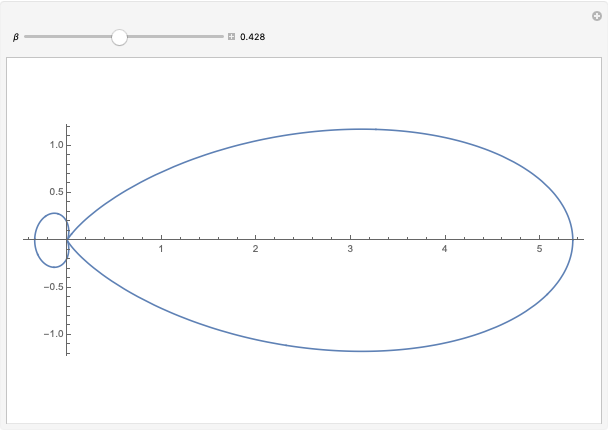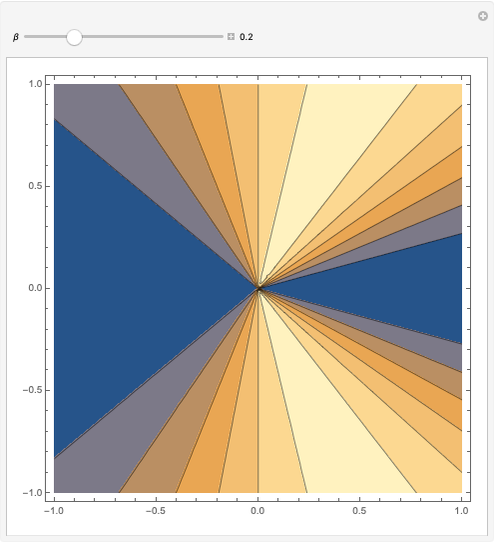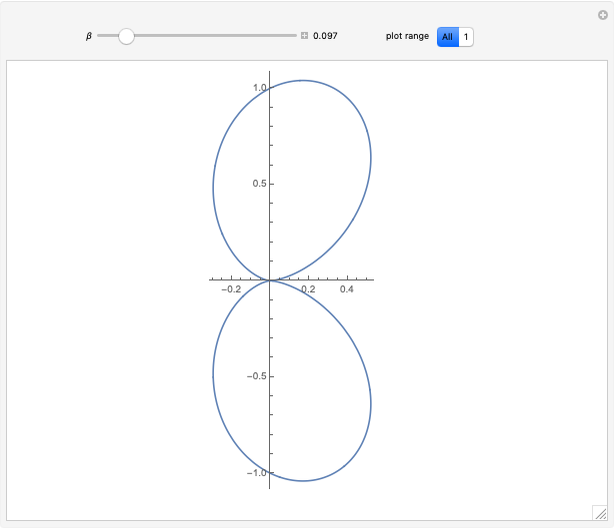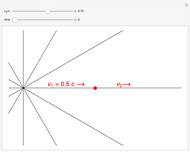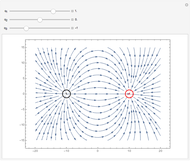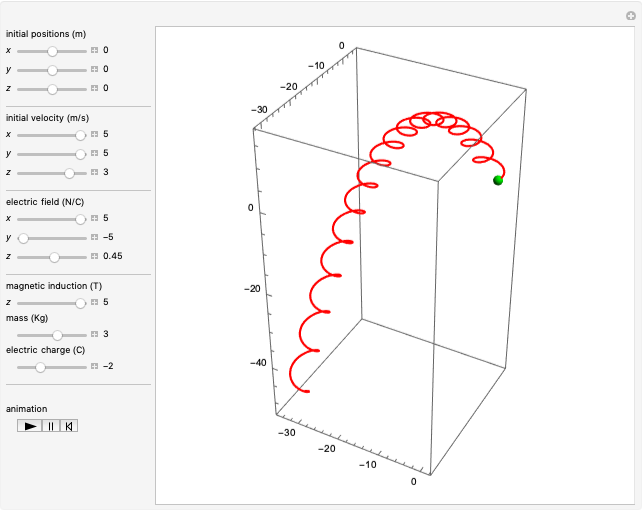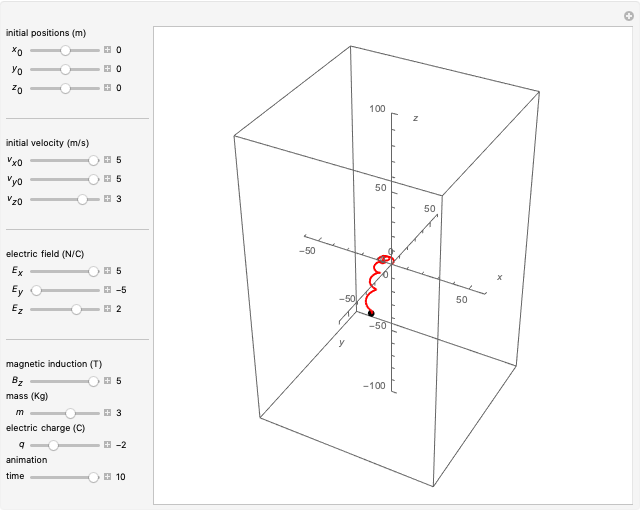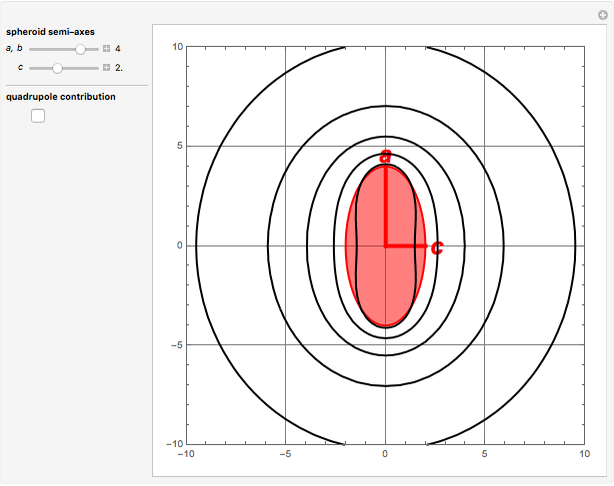Radiated Power from a Point Charge in Uniform Circular Motion

Requires a Wolfram Notebook System
Interact on desktop, mobile and cloud with the free Wolfram Player or other Wolfram Language products.
A charged particle naturally produces an electric field and, when in motion, also a magnetic field. Furthermore, if accelerated, the particle also emits electromagnetic radiation at the speed of light  .
.
Contributed by: Deyvid W. M. Pastana, Manuel E. Rodrigues and Luciano J. B. Quaresma (December 2020)
Open content licensed under CC BY-NC-SA
Snapshots
Details
Start with the Liénard–Wiechert fields for a point particle with charge  in arbitrary motion:
in arbitrary motion:

and
 ,
,
where
 ,
,
 ,
,
 ,
,
 ,
,
 ,
,

and
 .
.
The electric field has two terms, one determined by the velocity  and other by the acceleration
and other by the acceleration  , respectively proportional to
, respectively proportional to  and
and  . Because at large distances the acceleration terms dominate, these are also known as radiation fields. The Poynting vector is given by
. Because at large distances the acceleration terms dominate, these are also known as radiation fields. The Poynting vector is given by
 ,
,
where  represents the energy flux due to the electromagnetic field of the particle in motion; some of the energy stays with the particle, so this is just partly emitted as radiation.
represents the energy flux due to the electromagnetic field of the particle in motion; some of the energy stays with the particle, so this is just partly emitted as radiation.
Considering a sphere of radius  centered at the particle in the retarded time, the radiation reaches its surface an instant
centered at the particle in the retarded time, the radiation reaches its surface an instant  after being emitted at
after being emitted at  . As the area of a sphere grows proportionally to
. As the area of a sphere grows proportionally to  , only the terms of the radiation field become relevant, as noted. In this case, the radiation field is perpendicular to
, only the terms of the radiation field become relevant, as noted. In this case, the radiation field is perpendicular to  , so the second term in the Poynting vector is zero and we have
, so the second term in the Poynting vector is zero and we have
 ,
,
where
 .
.
The radiation power passing trough an element of the surface of the sphere on an instant  is, in terms of a solid angle,
is, in terms of a solid angle,
 .
.
This power is not the same as that produced by the charge at  ; rather it is
; rather it is
 ,
,
so the radiated power per unit of solid angle produced by the charge is

or
 ,
,
since
 .
.
In this Demonstration we determine the radiation emitted by a point charge in circular motion with constant speed, such that  and
and  are perpendicular with constant magnitudes. Considering a counterclockwise circular trajectory of radius
are perpendicular with constant magnitudes. Considering a counterclockwise circular trajectory of radius  in the
in the  -
- plane and center at
plane and center at  , when the particle is at the system origin, the velocity is
, when the particle is at the system origin, the velocity is
 ,
,
thus
 ;
;
the acceleration is
 ,
,
and the radiation is observed on  , with distance
, with distance  and direction
and direction
 ,
,
where  is the angle between this direction and the
is the angle between this direction and the  axis and
axis and  is the angle between the
is the angle between the  axis and the projection of
axis and the projection of  in the
in the  -
- plane, as used in spherical coordinates. With these considerations, it is easier to calculate the terms of the radiated power per unit of solid angle:
plane, as used in spherical coordinates. With these considerations, it is easier to calculate the terms of the radiated power per unit of solid angle:
 ;
;
 ;
;
 ;
;
 ;
;
 .
.
These equations lead to
 .
.
In this Demonstration, assume  for simplification. In this case,
for simplification. In this case,

or in Cartesian coordinates:
 .
.
These results show that as  increases, this radiation (usually referred to as synchrotron radiation) is emitted in the direction of the particle motion. The total power has higher intensity when compared with a particle in linear motion, so circular particle accelerators are more efficient when producing radiation than linear ones. These results also show roughly how particle colliders work, such as the Large Hadron Collider (LHC).
increases, this radiation (usually referred to as synchrotron radiation) is emitted in the direction of the particle motion. The total power has higher intensity when compared with a particle in linear motion, so circular particle accelerators are more efficient when producing radiation than linear ones. These results also show roughly how particle colliders work, such as the Large Hadron Collider (LHC).
References
[1] K. D. Machado, Teoria do Eletromagnetismo, Vol. 3, Ponta Grossa, Brazil: UEPG, 2006.
[2] J. D. Jackson, Classical Electrodynamics, 3rd ed., New York: Wiley, 1999.
[3] D. J. Griffiths, Introduction to Electrodynamics, 4th ed., Boston: Pearson, 2013.
Permanent Citation











